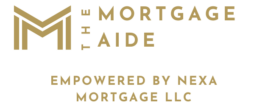Conventional Loan
Highlights of the Conventional Loan
(1) Down payments can be as low as 3% for first-time homebuyers. (2) Private mortgage insurance can be removed once you reach 20% equity in the home, reducing your monthly payment.

Eligibility
Here are some of the eligibility requirements for the Conventional Loan program. Select ‘Get Started’ to check if you’ll be a good fit.
Minimum credit score of 620 is desired
Most lenders prefer a DTI of 43% or lower, though some may allow up to 50% with strong compensating factors like high credit scores or large cash reserves.
home must be a primary residence, second home, or investment property, and it must meet Fannie Mae and Freddie Mac’s property standards
Loan must fall within the conforming loan limits set by the FHFA
At least 3% down payment for first-time homebuyers or 5% down for repeat buyers. A 20% down payment eliminates private mortgage insurance (PMI).
At least two years of stable employment and income history
Common Questions
What is a conventional loan, and how is it different from FHA or VA loans?
Conventional loans often offer better interest rates, terms, and lower fees compared to other loan types. However, they typically require very good to excellent credit score, manageable monthly debt, a down payment of 5-20%, and a stable income to qualify.
A conventional loan is NOT backed by the government, unlike FHA and VA loans. Instead, it follows guidelines from Fannie Mae and Freddie Mac, meaning lenders set their own terms based on your credit score, income, and down payment.
Can I qualify if I’m self-employed?
Yes! You’ll need to show at least two years of steady income through tax returns and bank statements. If your income varies a lot, that could make approval trickier.
Are there any down payment assistance programs for conventional loans?
Yes! There are several down payment assistance (DPA) programs available for conventional loans, especially for first-time and low-to-moderate-income homebuyers. Some options include:
Fannie Mae’s HomeReady® & Freddie Mac’s Home Possible® – These conventional loan programs allow as little as 3% down and may work with local DPA programs.
State & Local DPA Programs – Many states, counties, and cities offer grants, forgivable loans, or second mortgages to help cover your down payment and closing costs.
Employer & Nonprofit Assistance – Some employers and nonprofit organizations provide down payment help for eligible workers or community members.
Community Seconds® – A second mortgage program that allows homebuyers to use additional financing for their down payment.
The best part? Many of these programs can be combined to reduce your upfront costs!
What are the closing costs, and can they be rolled into the loan?
Closing costs typically range from 2% to 5% of the loan amount and include lender fees, appraisal costs, title insurance, and more. Some lenders offer options to roll these costs into the loan or provide lender credits in exchange for a slightly higher interest rate. You can also negotiate with the seller for seller concessions to help cover these costs!
Are there any penalties for paying off my loan early?
No! Most conventional loans do NOT have prepayment penalties. That means you can pay off your mortgage early or make extra payments without worrying about extra fees. Always check with your lender, but in most cases, you’re free to pay ahead and save on interest!
Other Info
Seller Concessions Can Help With Closing Costs
Sellers can contribute up to 3% of the home’s price toward your closing costs if you’re putting down less than 10%, and up to 6% if you’re putting down 10-25%. This can help lower your upfront costs!
Appraisal & Property Condition Matter
For a conventional loan, the home must be in good condition—meaning no major safety or structural issues. If the property has problems like a bad roof or missing utilities, it may not qualify until repairs are made.
